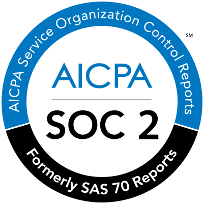Accelerate projects with software development outsourcing
Sourcefit provides software development outsourcing services that connect companies with skilled developers who build secure, scalable applications. Our teams reduce costs, shorten timelines, and deliver software tailored to your business goals from SaaS platforms to mobile apps and enterprise tools.
Please contact us for a free consultation


From code to competitive advantage
Sourcefit provides software development outsourcing that adapts to your needs whether you require dedicated teams, project based delivery, or staff augmentation. Our developers work with modern frameworks across web, mobile, and enterprise systems to deliver secure, scalable applications aligned with your workflows and product roadmap.
By outsourcing software development, companies gain access to global technical expertise while lowering costs and avoiding recruitment delays. With Sourcefit, you can build an MVP, scale an enterprise platform, or maintain existing systems through flexible engagements that grow with your business.




Reliable and transparent software development services
We provide flexible software development support that can scale from individual engineers to full teams. Structured onboarding, agile workflows, and QA processes maintain consistency in code quality, delivery speed, and reliability. Client success managers and account oversight ensure visibility and alignment throughout development.
Our secure delivery centers and ISO-certified practices protect data and applications across all environments. With more than 15 years of outsourcing experience and delivery hubs in five countries, Sourcefit provides software development outsourcing that is scalable, compliant, and trusted worldwide.
Built on a foundation of trust
Software development services we provide

Custom software development
Design and build applications tailored to your workflows, customers, and business requirements.

Web and mobile app development
Develop cross-platform applications using frameworks like React Native, .NET, Angular, and Python, optimized for usability and performance.

Database design and programming
Access secure, scalable data architectures with migration, tuning, and integration for enterprise scale.

Cross-platform development
Deliver consistent results across environments with our expertise in Java, C Sharp, Python, and JavaScript.

Developer staff augmentation
Vetted developers extend your team and integrate seamlessly into your tools and processes.

Enterprise system integration
Improve efficiency and data consistency with API development, workflow automation, and system integration.
Recipient of Gold Stevie®
Award for HR Innovation

Recognized for excellence



Why companies outsource software development to Sourcefit
Proven track record
With over 15 years of delivery, we build software that scales with business needs across SaaS, fintech, healthcare, and e-commerce.
Scalable engagement models
Choose project-based work, dedicated teams, or developer staff augmentation to match your goals.
Transparent and cost-effective outsourcing
Our cost-plus billing saves up to 70% compared to in-house hiring, with no hidden fees.
Global reach with local expertise
Delivery hubs in the Philippines, South Africa, Dominican Republic, Armenia, and Madagascar provide cultural alignment, timezone coverage, and continuous progress.
Enterprise-ready security and compliance
Our ISO-certified infrastructure, confidentiality protocols, and regulatory training protect sensitive applications and data.
Software development outsourcing pricing
Position requirement
-
Entry level
-
Mid level
-
Expert level
Outsourcing
*monthly
- $1,330
- $2,033
- $3,840
Development costs you can plan around from day one. We offer fixed team pricing that scales with your project requirements.
FAQs
-
What programming languages and technologies do your developers work with?
Our teams are experienced with Java, C#, Python, JavaScript, PHP, React, Angular, Node.js, .NET, mobile frameworks, cloud platforms, and both modern and legacy technology stacks.
-
Where are Sourcefit’s developers located?
Our talent pool spans five strategic global locations, including the Philippines, giving you access to cost-effective, highly skilled professionals.
-
Will I have control over the development process?
We use agile methodologies, provide dedicated project oversight, and offer regular progress updates. You stay in control without being bogged down in day-to-day management.
-
Is Sourcefit suitable for startups?
Yes, we’re a perfect match for fast-growing startups that need high-quality software development without the high cost of local hiring. We offer custom engagement models ideal for early-stage companies.





















































